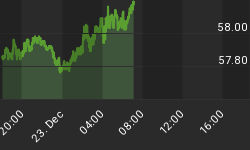New Home sales rose to a Seasonally Adjusted Annualized Rate (SAAR) of 592,000 vs. a Bloomberg Econoday consensus estimate of 562,000.
Interestingly, home price appreciation as measured by Case Shiller unexpectedly declined by 0.1%. That is on top of a revision of for last month from +0.5% to-0.2%.
Housing is emerging as a positive surprise for the 2016 economy. New home sales burst to their best strength of the cycle during the Spring, coming in at a much higher-than-expected 592,000 annualized rate in June following a 572,000 rate in both May and April (both revised). To see the strength by comparison, the rate in June last year was 25 percent lower at 472,000.
Trend strength appears across regions led by the Midwest, up 44 percent year-on-year, with the South at the rear but still up 21 percent. Monthly data show slowing in the Northeast, where however sales totals are very small, and solid strength in the West which is a key region for home builders.
The gain in sales did not come at the expense of prices, at least in June. The median jumped 6.2 percent to $306,700 which, however, is only up 6.1 percent from a year ago.
New Homes Sales 1963-Present

The above chart puts a needed perspective on the strength of the the housing recovery. Sales are where they were in January of 1963!
Home Prices Unexpectedly Decline
The Wall Street Journal reports U.S. Home-Price Increases Maintained Strong Pace in May.
"S&P/Case-Shiller Home Price Index rose 5%, matching April's increase. Home prices continued rising quickly in May, further proof that the housing market had its strongest spring since the recession," says the Journal.
However, for the last two months, home prices actually fell. Bloomberg Econoday provides this comparison.

Highlights
Home sales are up while home prices are down. Case-Shiller's 20-city adjusted index fell 0.1 percent in May, well under expectations for a 0.4 percent gain. FHFA house price data released last week were also much weaker than expected. Making matters worse is a steep downward revision to April, now at minus 0.2 percent vs an initial plus 0.5 percent. But the trouble is at least limited to April and May as March is revised 1 tenth higher to a very strong 0.9 percent.
Unadjusted data, which are tracked closely in this report, are not revised lower for April, holding at a solid 1.1 percent gain reflecting the heavy housing activity in the Spring. The monthly result for May is plus 0.9 percent. Year-on-year, the unadjusted rate is at only plus 5.2 percent, down from an unrevised 5.4 percent in April and making the 6 percent line, which prices had been testing earlier this year, a distant memory.
Seasonal adjustments are heavy in the spring as they cut levels to match lighter activity during the other seasons. Further clouding comparisons is the fact that readings in this report are 3-month averages, not single month results. But the bottom line is very clear, that home prices, despite thin supplies of homes for sale, are softening.
When discussing Case-Shiller numbers it's important to understand the numbers are reported two ways, seasonally adjusted and unadjusted in addition to year-over-year comparisons that are always unadjusted. In this case, Bloomberg provides the correct take. Prices are weakening. If that continues, year-over-year numbers will follow.















